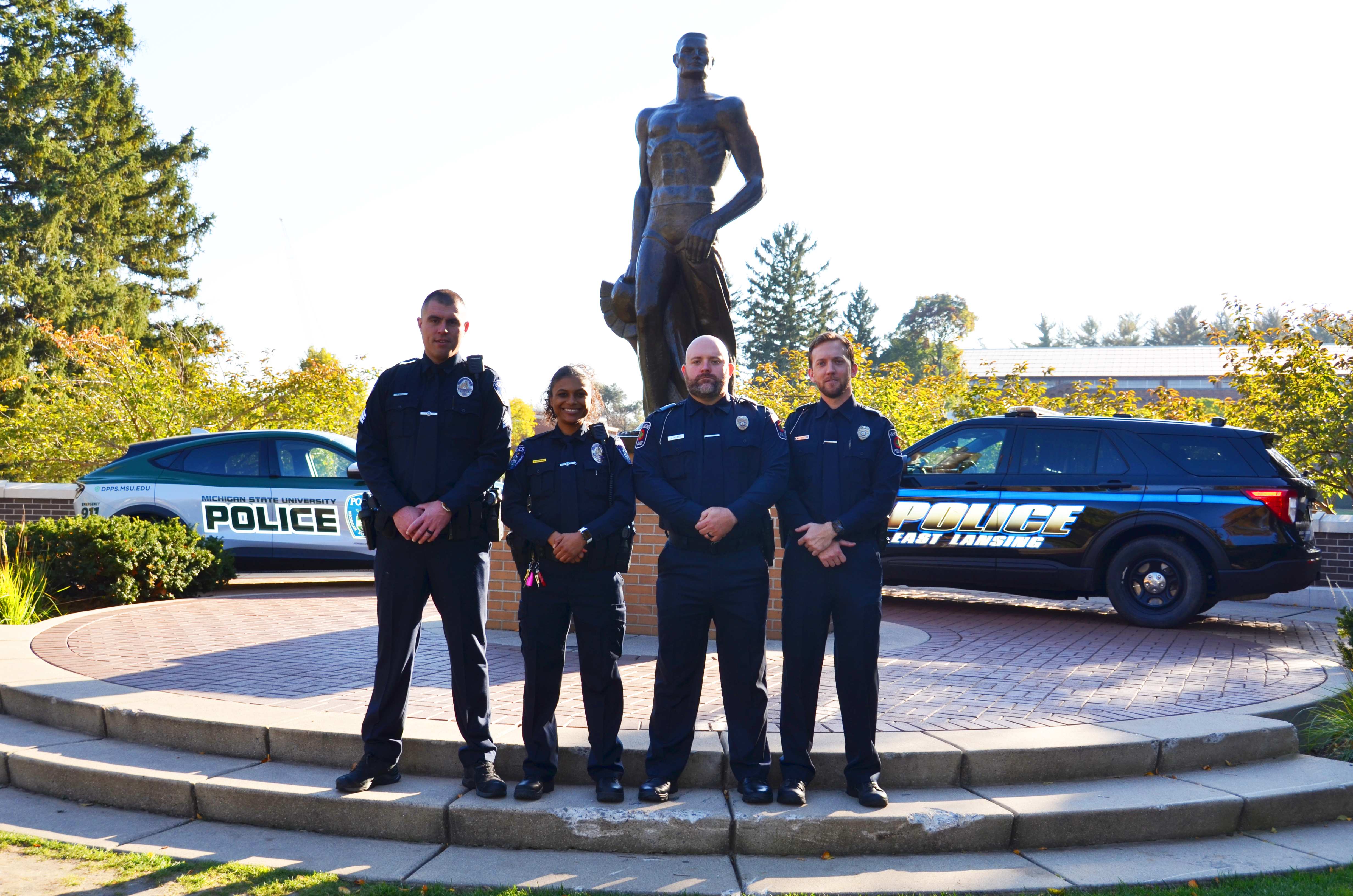As Michigan State University President Samuel L. Stanley Jr., M.D., prepares to leave his role as the institution’s 21st president, his legacy will be his commitment to improving safety on campus.
President Stanley’s dedication to ensuring a safer campus led to several large projects, including the establishment of the MSU Operations Center — a facility that will centralize the university’s security systems and technology through the MSU Department of Police and Public Safety, which is expected to be operational by the end of the year. The goal is to ensure a more comprehensive and robust safety and security portfolio for campus.
“Having a centralized operations center is essential to the safety of our students, faculty and staff,” said Stanley. “Ensuring MSU is as safe as possible is a shared commitment for all our campus leaders. I’m grateful to MSU Vice President for Public Safety and Chief of Police Marlon Lynch for his commitment, and I thank him for his extraordinary work and partnership in helping to move this critical project forward.”
The centralization of the university’s security systems — including more than 2,000 cameras across campus, electronic devices and equipment, intrusion alarms and emergency notification and broadcast systems — will result in more seamless and efficient operations and monitoring in real time between campus units. It will also aid in better cross-collaboration between those units, which include MSU IT, Infrastructure Planning and Facilities, and Residence Education and Housing Services, among others.
Additionally, MSU’s Department of Police and Public Safety will be able to analyze data and disseminate information pertaining to threats or emergency calls in a more efficient manner through centralized monitoring services.
The center will be housed within the MSU DPPS building and will feature a fully integrated security system for access control, intrusion prevention and video security.
Planning for the MSU Operations Center began in the summer of 2021 when the department hired an outside consulting firm to conduct a security operations study that examined staffing requirements, locations, equipment, software and other needs to bring the center to fruition.
“The implementation of a new centralized operations center is crucial to enhancing the university’s physical security,” said Lynch. “Having an established, unified and standardized approach in responding to campus threats and safety concerns allows us to be more proactive in ensuring critical information is disseminated in a timely manner.”
President Stanley and Chief Lynch have worked collaboratively in other ways to help make MSU’s campus a safer and more secure place. This includes the installation of more than 300 additional cameras over the past year — a critical part of MSU’s extensive safety and security portfolio — as well as improved lighting on campus to include brighter and more energy-efficient LED bulbs and the launch of the SafeMSU app, which allows users to share their location with a friend as they progress to their destination.
Addressing campus safety extends far beyond the confines of the MSU campus. In response to community concerns on both sides of Grand River Avenue, the East Lansing Police Department and the MSU Department of Police and Public Safety have partnered to form the Proactive Engagement and Community Enhancement Team, or PEACE, which will focus on preventing criminal activity while also providing education and promoting community safety.

